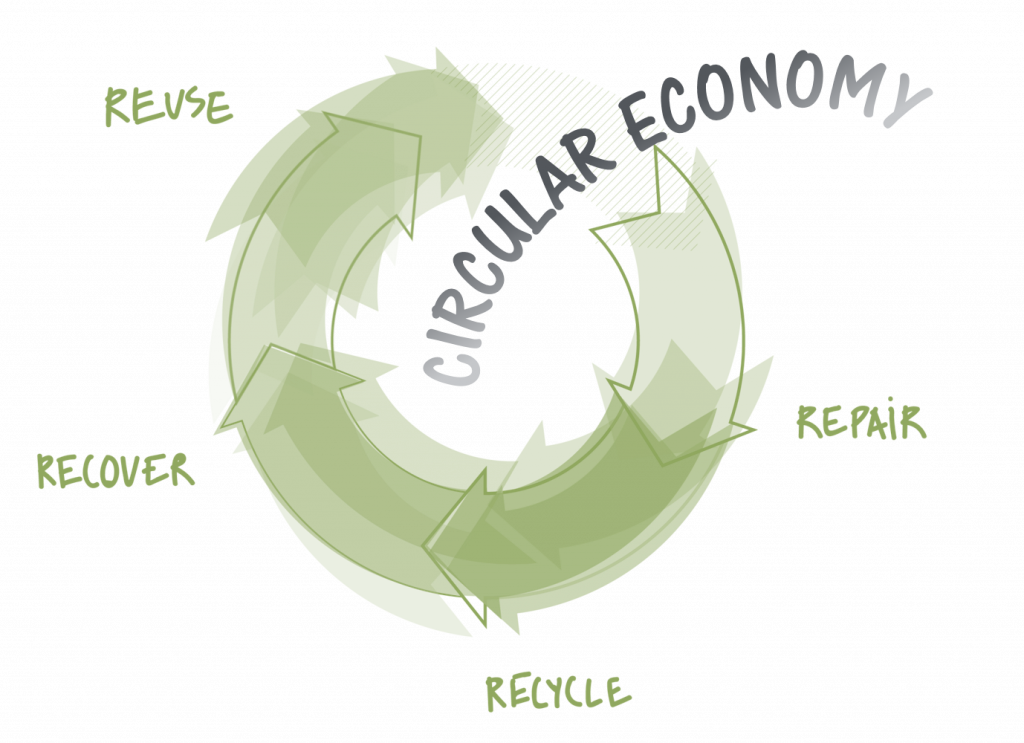As I noted in Part 1 of this article, analysts at Gartner predict circular economies will replace today’s wasteful linear economies over the next decade or so. In order for that to happen, both supply chains and consumer habits must significantly change. Steven Steutermann, managing vice president in the Gartner supply chain practice, states, “To turn around a supply chain system, 10 years is not a long time. CSCOs should deploy change management programs and start pilots now. The pilots will provide valuable learnings and help build momentum for further circular economy initiatives.”[1] Commenting on the Gartner prediction, the editorial staff at Material Handling & Logistics (MH&L) write, “Supply chain officers need to take note of the fact that both consumer and shareholders are clearly shifting toward sustainability. What this means to these managers is that they need to prepare for the transformation from a linear to a circular supply chain.”[2]
Marina Mattos, a Postdoctoral Associate at the MIT Center for Transportation and Logistics, bluntly asks, “How will such a shift affect supply chains?”[3] It’s an important question. Mattos adds, “A critical supply chain challenge is how to reconfigure distribution channels, forecast methods and technology to generate value across business ecosystems. To achieve this goal, companies must create new business models and improve supply chain management functions.” According to Jeff Butler, supply chains’ circular economies must deal with both internal supply chain waste as well as broader consumer loop waste. He explains, “Many of the materials that are utilized during manufacturing exist solely within the confines of the supply chain and never exit it in the form of the product or packaging. In other words, this material waste is invisible to the end consumer and typically ends up in places it does not belong.”[4]
Closing the loop
As the name implies, a circular economy is one in which the loop between manufacturers and consumers is closed. Mattos explains, “To build business ecosystems that are compatible with the goals of a circular economy, companies need to improve their market response times. They must also develop new product ranges, production processes, sourcing strategies and distribution channels. And enterprises need to redefine customer relationships and the concept of product obsolescence. These changes require new strategies that narrow, slow, intensify and close supply chain loops (supply chains that encompass the flow of materials back into the value chain).” The desired goal sought by proponents of a circular economy is to design waste out of the production and consumption cycle. Frankly, I’m not optimistic the world will be dramatically different a decade from now; but, manufacturers can make the Gartner vision closer to a reality by starting now. As Mattos notes, the path towards a circular economy begins with narrowing, slowing, intensifying, and closing the supply chain loop. She defines those paths this way:
- Narrowing the loop. “This approach requires companies to improve the efficiency of production, distribution and consumption processes.”
- Slowing the loop. “Investing in ways to extend the life of products and reducing or avoiding waste are central elements of this approach.”
- Intensifying the loop. “This method goes beyond the slowing phase by transforming products into services. The approach involves new procurement methods that promote asset sharing (for example, cars), grounded in new distributed models and infrastructure.”
- Closing the loop. “Companies close the loop by reintegrating waste into supply chains (from the production of textiles, plastics and energy), and by reusing and recycling products. For example, products that use glass, plastic, paper and metals are widely recycled. However, innovative manufacturing methods can provide opportunities for textile and apparel recycling too.”
According to the Gartner report, “The biggest challenge to circular economy efforts is setting measurable goals. Often, the key challenge in setting these goals — as with any transformational initiative — is substantiating how the proposed changes will impact consumer preferences and, ultimately, margins.” Steutermann adds, “It is important not to confuse [sustainability] metrics with the circular economy. Good metrics for the circular economy could be the percentages of reclaimed, reused materials for production and the reduction of single-use plastic.”
Making the circular economy a reality
The MH&L staff asserts, “Switching from a linear to a circular economy is not a go-it-alone project — it requires a whole ecosystem. Supply chain officers should collaborate with internal product designers and suppliers to understand exactly how products are consumed and disposed of after consumption. … Another action to take is to join a consortium or alliance, such as Make Fashion Circular, the Alliance to End Plastic Waste or Loop, an online shopping concept designed to eliminate single-use packaging.” Analysts from Bopro, a provider of integrated real estate services, suggest simplicity of design is essential to make a circular economy work. They explain, “Defined by the number of components, an increase of product complexity directly leads to an even bigger increase in the amounts of loops to be closed and thereby an increase in (supply) chain complexity. … In order to counter (supply) chain complexity in a circular economy, one must strongly invest in product simplification.”[5]
Butler observes, “In reality, economies are driven by supply chains. So the root question we should be asking is: what if we could alter the trajectory of linear supply chains in a way that would disrupt the cycle of ‘take, make, dispose’?” He continues, “A circular supply or value chain utilizes resources as long as possible to maximize their value. At the end of the service life of products and materials, their life cycle is continually extended via recovery and regeneration. It’s important to note that this recovery and regeneration are not what we know as recycling today. In fact, traditional recycling goes from being one of the best options to capture value in an end of life product in the ‘make, take, dispose’ model to one of the least attractive options in a circular supply chain, due to a number of business and environmental reasons.” So what does he recommend? “Rather than be constrained by the shortcomings of the traditional recycling processes,” he writes, “the new technical cycle in a circular supply chain focuses on recovering products, components and materials, to restore them through reuse, repair or remanufacturing as a result of intentional design.”
No company believes promoting waste is profitable. That’s why making a business case for reducing waste is not difficult. An article published in The Green Supply Chain insists, “Eventually, waste will not exist.”[6] It continues:
“Products are designed and optimized for a cycle of disassembly and reuse. ‘These tight component and product cycles define the circular economy and set it apart from disposal and even recycling where large amounts of embedded energy and labor are lost,’ [an Ellen MacArthur Foundation] report says. A second key point involved maintaining a strict differentiation between consumable and durable components of a product. Consumables in the circular economy will largely made of biological ingredients or ‘nutrients’ that are at least non-toxic and possibly even beneficial for safe return to the environment. Durables such as engines or computers, on the other hand, will be designed from the start for reuse. Thirdly, the energy required to fuel this cycle will be renewable to decrease resource dependence and increase overall system resilience.”
By now it should be clear, circular economies will not emerge naturally. They will require careful and persistent planning and implementation.
Concluding thoughts
As I noted in the first part of this article, consumer behavior plays an important role in making circular economies a reality. Mattos adds, “As lifestyles change in response to environmental and climate concerns, product innovations and government policy, the case for transitioning to a circular economy becomes more compelling. To achieve such a transition, more collaboration between various stakeholders is needed. Academia, the private sector and government need to come together to develop better ways to leverage the planet’s natural resources and support the behavioral changes needed to create new consumer models.” Bopro analysts add, “When looking at circular economy, … we aim not only at closing the loops, but above all on minimizing demand in the first place.” It sounds counterintuitive for manufacturers to want to decrease demand for their products. Proponents of the circular economy believe new business models will present opportunities for manufacturers to make profits in ways. The challenge will be to keep consumers happy and engaged.
Footnotes
[1] Staff, “Circular economy will replace wasteful linear one by 2029,” Smart Cities World, 1 October 2019.
[2] Staff, “Circular Economies to Replace Linear Economies in 10 Years, Material Handling & Logistics, 27 September 2019.
[3] Marina Mattos, “How a circular economy changes supply chain loops,” Longitudes, 26 July 2019.
[4] Jeff Butler, “Can circular supply chains help solve our global waste problem?” The DELMIA Blog, 26 November 2018.
[5] Bopro, “Circular Economy and Supply Chains,” GRESB, 16 July 2019.
[6] Staff, “Green Supply Chain News: Will Companies Retain Ownership of Products they Sell to Harvest and Re-Use the Materials they Contain?” The Green Supply Chain, 31 July 2012.





